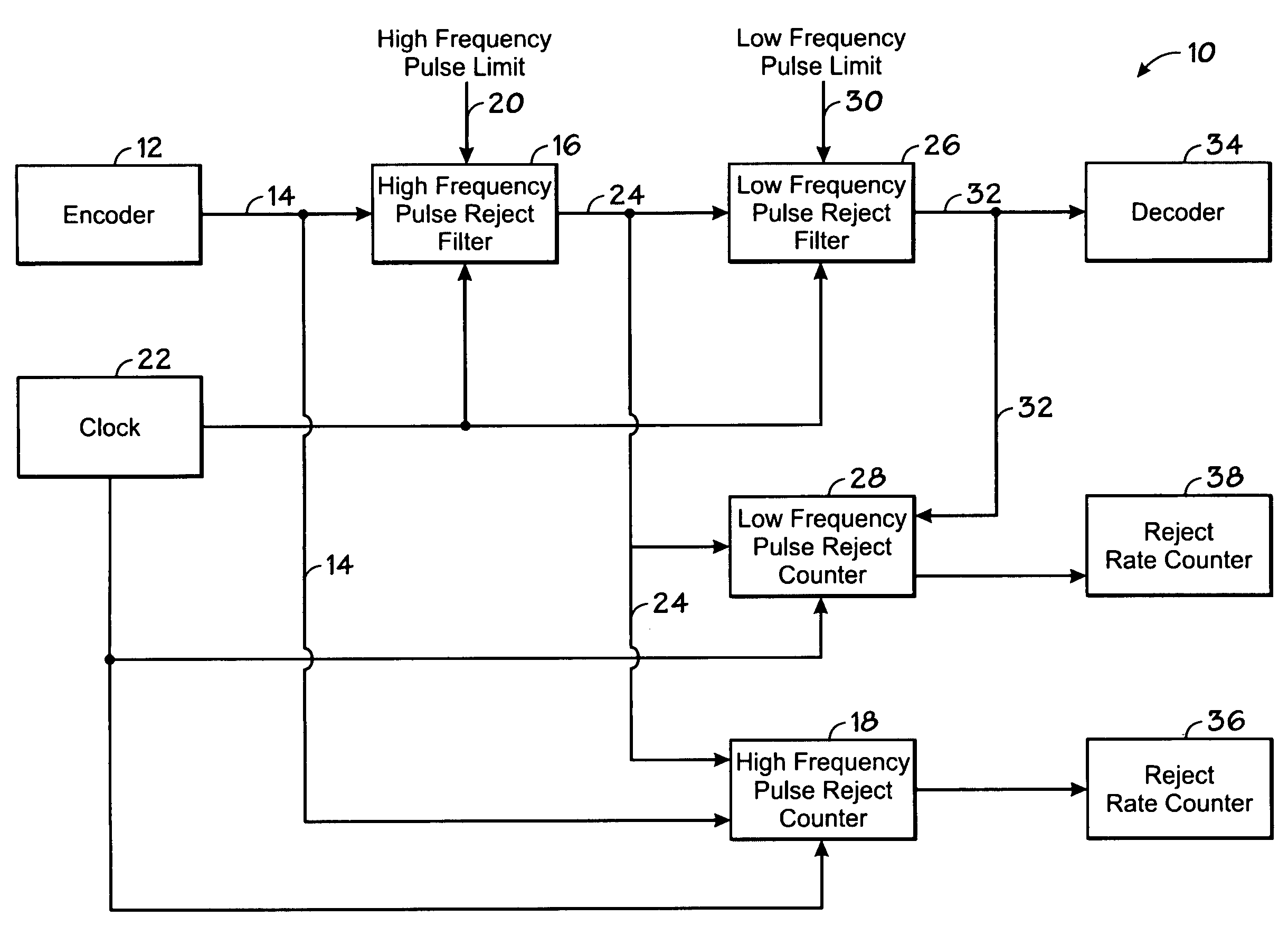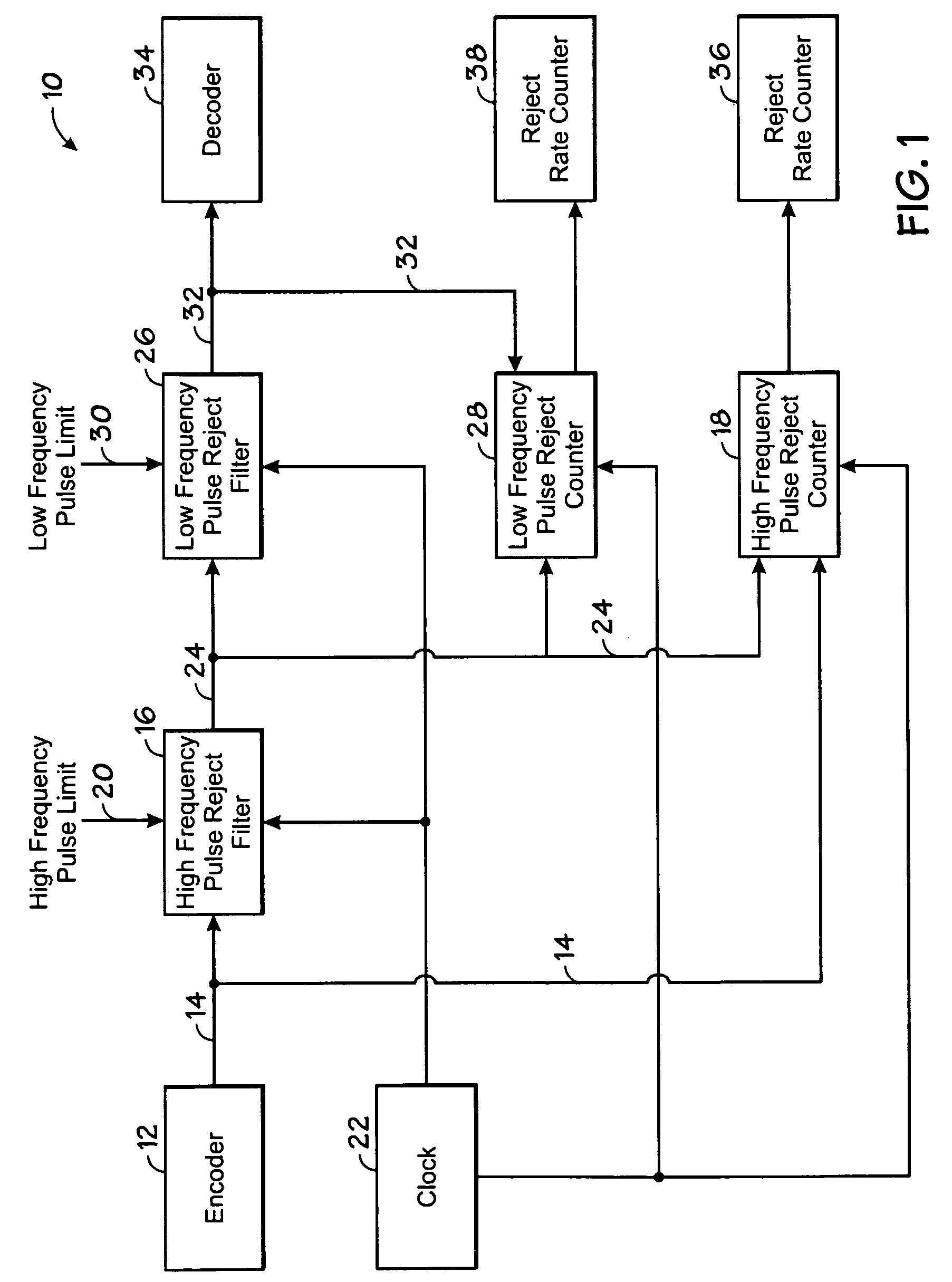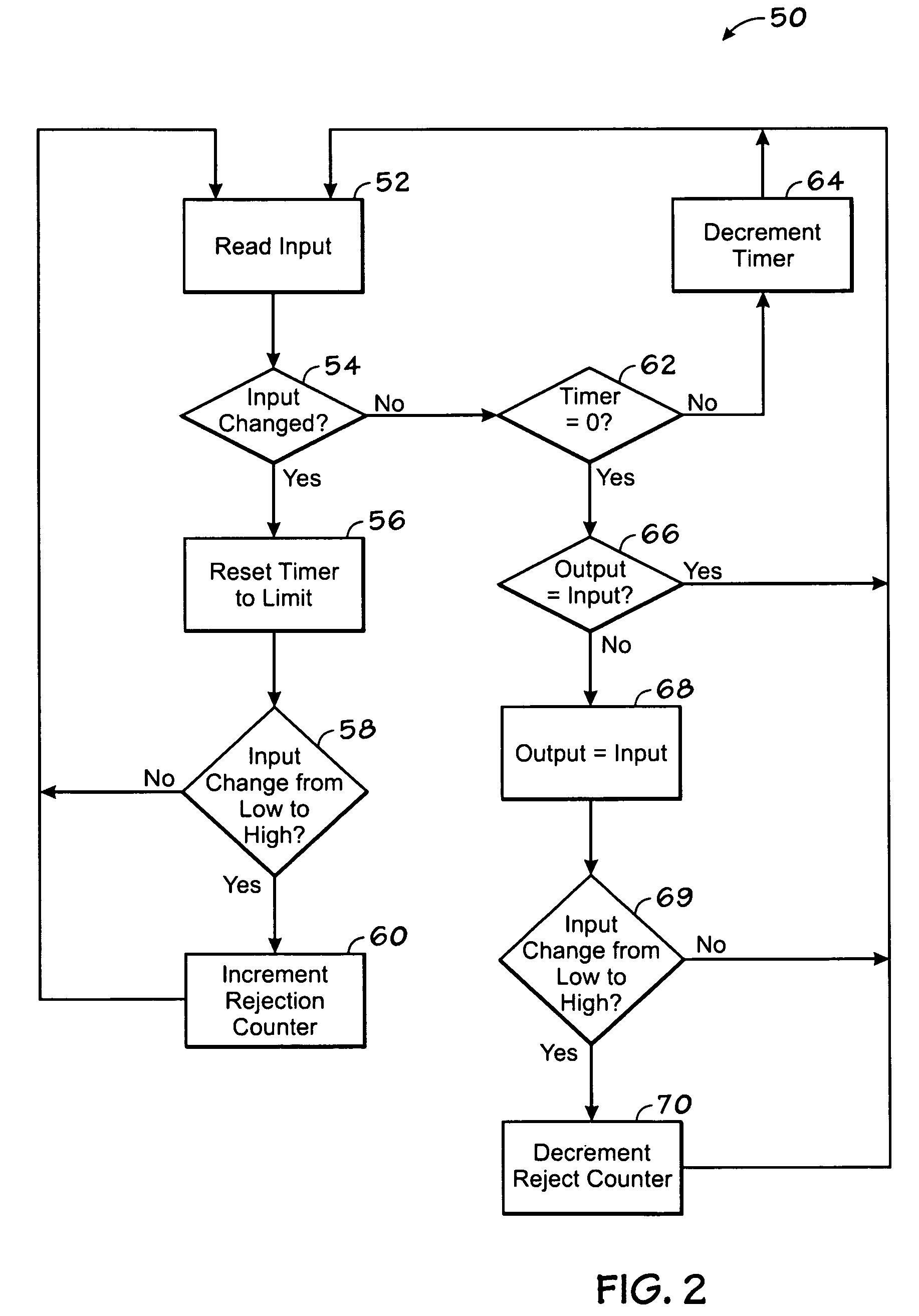Digital pulse reject counter
a digital pulse and counter technology, applied in pulse manipulation, pulse technique, instruments, etc., can solve the problems of motor monitoring systems deprived of useful information, the number of pulses rejected by the detection system is not accounted for, and the electrical signals produced by motor-coupled sensors are typically susceptible to nois
- Summary
- Abstract
- Description
- Claims
- Application Information
AI Technical Summary
Benefits of technology
Problems solved by technology
Method used
Image
Examples
Embodiment Construction
[0010]Turning now to the drawings, and referring first to FIG. 1, a block diagram is shown of an exemplary digital pulse rejection counter system 10, in accordance with an embodiment of the present technique. System 10 may be part of a motor monitoring system configured to monitor signals produced by sensors coupled to the motor. More generally, however, system 10 may be applied to any suitable load. In the illustrated embodiment, system 10 is configured to filter out, (i.e., reject) noise signals above predetermined frequency limits and to count the number of such rejected noise signals. In so doing, system 10 is configured to classify and quantify noise signals according to their frequency ranges (i.e., the duration of time between one signal change [tdl1] and a subsequent signal change).
[0011]System 10 includes an encoder 12 configured to digitally encode signals obtained from a sensor component coupled to a motor. Signals encoded by encoder 12 may comprise, for example, motor sp...
PUM
 Login to View More
Login to View More Abstract
Description
Claims
Application Information
 Login to View More
Login to View More - R&D
- Intellectual Property
- Life Sciences
- Materials
- Tech Scout
- Unparalleled Data Quality
- Higher Quality Content
- 60% Fewer Hallucinations
Browse by: Latest US Patents, China's latest patents, Technical Efficacy Thesaurus, Application Domain, Technology Topic, Popular Technical Reports.
© 2025 PatSnap. All rights reserved.Legal|Privacy policy|Modern Slavery Act Transparency Statement|Sitemap|About US| Contact US: help@patsnap.com



